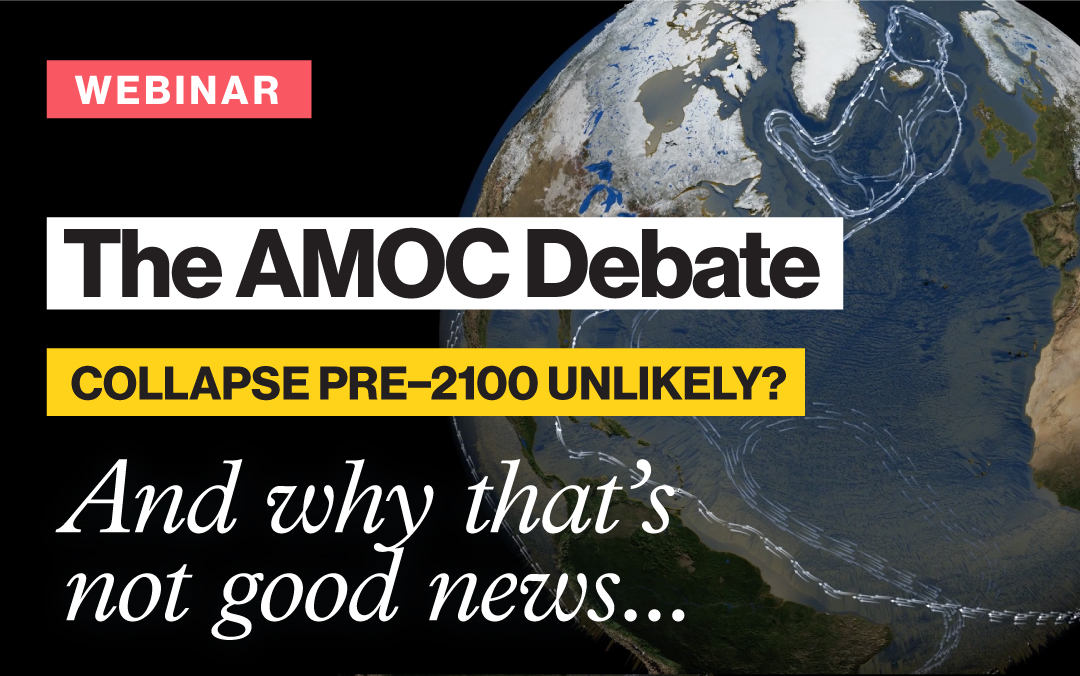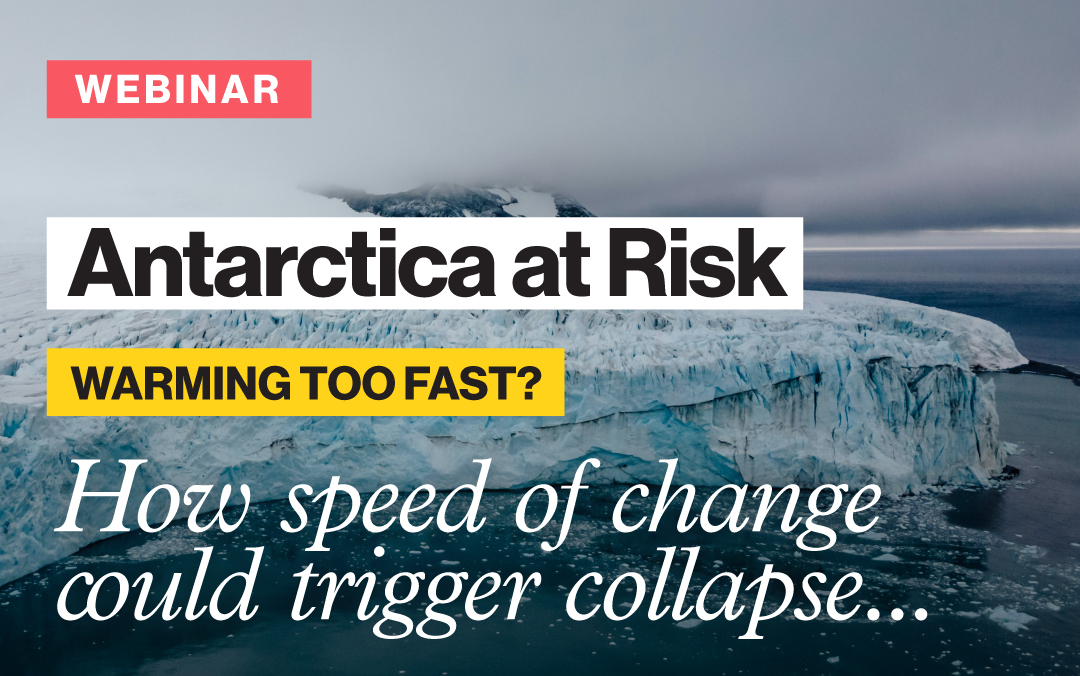When a new Nature paper claimed the Atlantic ‘conveyor belt’ is unlikely to collapse this century, some media headlines gave an impression of reassurance. But the scientists behind the study are urging caution.
The Atlantic Meridional Overturning Circulation (AMOC) is a vast system of ocean currents that moves warm, salty water north from the Equator and cold water back south. Every five days the AMOC transports enough heat to power the entire globe for a year. It plays a key role in regulating global and regional climate, helping keep Europe much milder, stabilises rainfall across the tropics, and regulates sea levels along the U.S. coast. But as the climate warms the AMOC is expected to weaken due to both surface warming, increased meltwater from the Greenland Ice Sheet and increased precipitation.
In September’s ClimTip webinar, Dr Jonathan Baker (Met Office, UK) unpacked the results behind the recent headlines. Baker and his colleagues analysed 34 of the latest Earth system models to test what happens under two extreme scenarios: a fourfold rise in CO₂ and massive meltwater input from Greenland.
The results show the AMOC weakens sharply but without a full collapse. Two stabilising processes seem to hold it together:
- strong Southern Ocean winds that keep deep water circulating, and
- Pacific circulation that is too weak to take over the Atlantic’s role.
That stability, however, comes with a warning. “Unlikely collapse this century” does not mean “safe.” Even a weakened AMOC can reshape rainfall, food security, and sea levels. The risks of such disruption grow with every degree of warming.
Why framing matters
The study triggered wide media coverage and a wave of relief-laced headlines. Some scientists have expressed concern that the media reporting could blur nuance with optimism – a case in point for “false reassurance" or "false comfort" framing. As Baker himself notes, the headlines were largely accurate in stating that an AMOC collapse is unlikely this century. But that should not be mistaken for comfort: a weakening remains very likely, with serious consequences for rainfall patterns, food systems and sea level rise.
The AMOC’s apparent resilience rests on narrow physical balances. And those balances are shifting rapidly. At ClimTip, we emphasise the kind of nuance that this study reveals: not binary collapse or no collapse, but revealing the underlying mechanisms. Understanding why the AMOC has not yet collapsed is crucial, not for false optimism, but because it tells us how fragile its stability can be.
Complete Webinar Recording
Watch the full talk here:
Reference: Baker, J. A., Bell M. J., Jackson L. C., Vallis G. K., Watson A. J. & Wood R. A. (2025): Continued Atlantic overturning circulation even under climate extremes. Nature 638, 987–994 (2025). Full paper available here.
For more conversations like this, explore the ClimTip webinar series and see how science is tackling the biggest challenges of climate tipping points.
Add to your Watchlist
Watch the previous ClimTip webinar with Sjoerd Terpstra on the assessment of abrupt shifts in CMIP6 Models.
Thumbnail and opener: Design by Kuat Abeshev. Photo by NASA.





